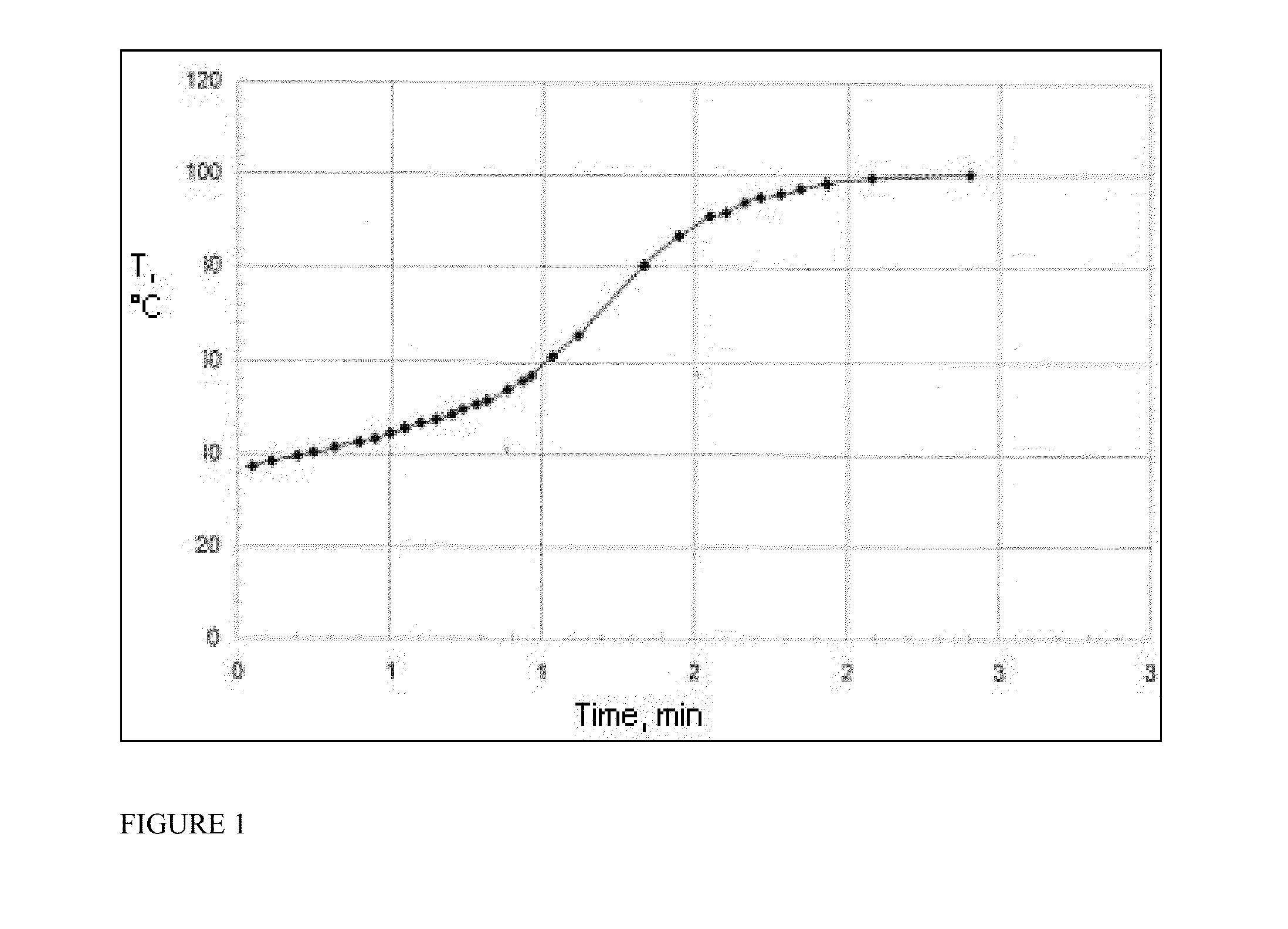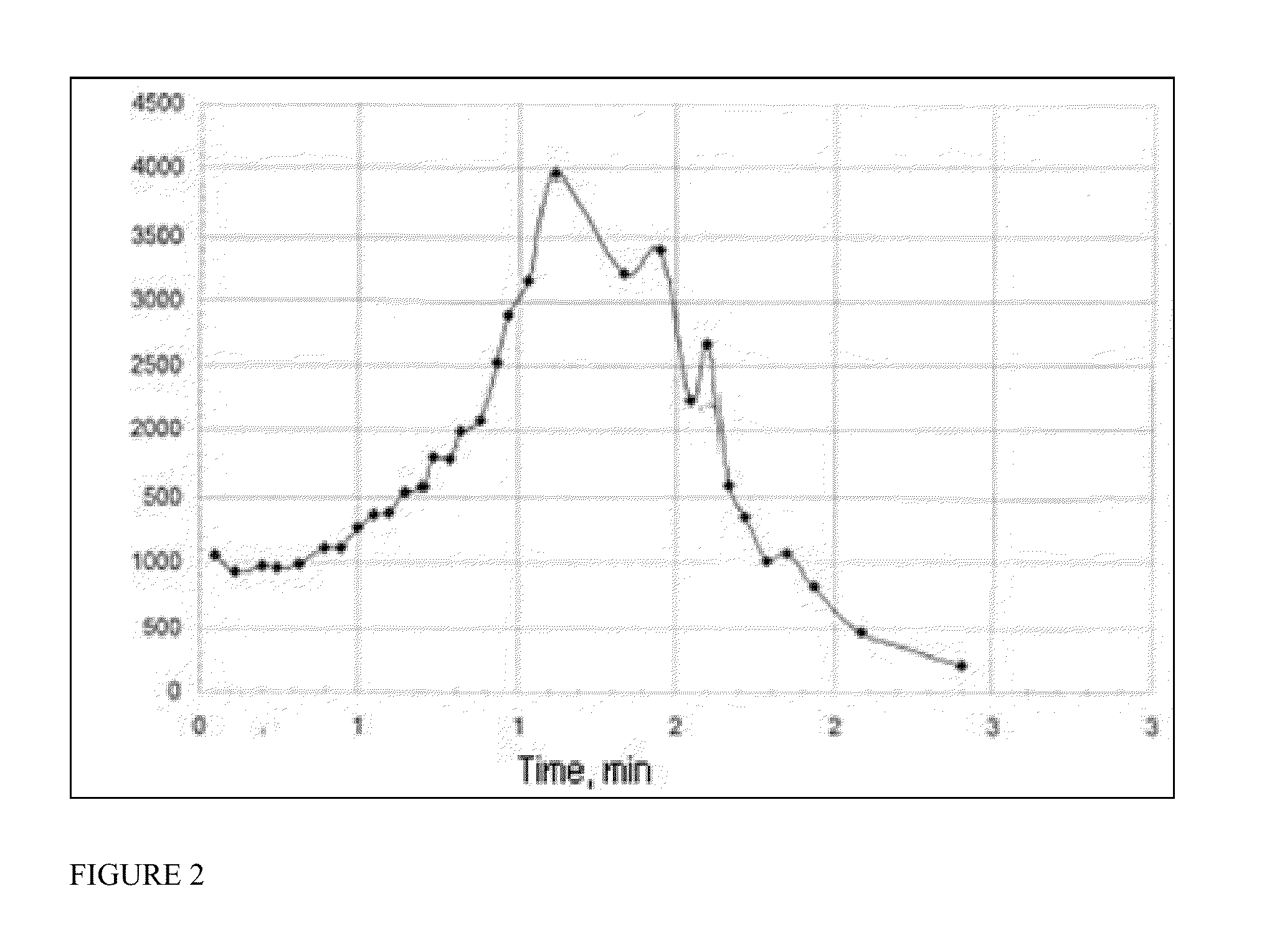Thermo-gas-generating systems and methods for oil and gas well stimulation
a technology of gas-generating system and oil well, which is applied in the direction of fluid removal, wellbore/well accessories, drilling composition, etc., can solve the problems of limited stimulation effect of formation, small temperature increase, damage to the integrity of well cement job,
- Summary
- Abstract
- Description
- Claims
- Application Information
AI Technical Summary
Benefits of technology
Problems solved by technology
Method used
Image
Examples
example 1
Laboratory Testing Rates of Reaction—BSS
[0054]The chemical reaction of the sodium nitrite with ammonium nitrate generates nitrogen gas, water and heat, and has a rate of reaction that is pH dependent on a number of equilibrium processes. In laboratory testing, the pH of a COS solution was increased with sodium carbonate (soda ash), and the pH was decreased with hydrochloric or acetic acid.
[0055]Laboratory samples of BSS COS were prepared using a well-known commercially available emulsifier, as follows. A COS discontinuous phase was prepared by mixing ammonium nitrate (25.0-40.0 g), sodium nitrite (15.0-30.0 g) and water (30.0-50.0 g), which was then heated to 50° C. The solution had a density of 1.13 to 1.39 g / cm3.
[0056]To this solution, soda ash (2.0-10.0 g) and pyridine (0.01-1.0 g) were added and mixed to stabilize the solution. The solution was then emulsified with produced crude oil (8.0 to 30.0 g) and an emulsifier (0.01-1.0 g) at room temperature, in an agitator at 2,400 to 2...
example 2
Laboratory Testing Rates of Reaction—BSV
[0058]BSV is a high viscosity, aqueous COS with the desired viscosity of the system being achieved from the addition of guar gum (GG) or polyacrylamide (PAA) to the COS. To stabilize the COS, an aqueous soda ash solution was added to the COS.
[0059]Laboratory samples of the viscous BSV COS were prepared (% total weight) by mixing, ammonium nitrate (15.0-50.0%), sodium nitrite (15.0-40.0%) and water (up to 70.0%). To this solution, soda ash (up to 1.5%) stabilizer was added and mixed, to create a homogeneous solution. To this solution, guar gum (up to 1.0%) was added and stirred at 30° C. The resulting solution was viscous and homogeneous.
[0060]The reactive capacity of this viscous BSV COS with the addition of an activator to initiate the decomposition reaction was assessed as follows. Approximately 100 ml of viscous BSV COS was put into an insulated flask with the diameter of 45 mm, and a thermometer was set into the solution, and the initial t...
example 3
Field Trial of BSS
[0068]The treatment method of using a BSS exothermic chemical gassing system includes the injection of an emulsion comprising a continuous oil phase with a discontinuous Combustible Oxidizing Solution (COS) phase. The emulsion was prepared and pumped down the wellbore, followed by a spacer fluid of either oil or water to displace the COS emulsion out of the wellbore and place it into the treatment area of the formation. The BSS activator aqueous hydrochloric acid solution was then pumped into the wellbore and then displaced from the wellbore and into the treatment area with water.
[0069]Mixing of injected COS and activator in the formation pore spaces and fractures causes initiation of the decomposition reaction that generates of a vast amount of heat and gases, as confirmed in the laboratory tests. The gases generated during the reaction inside the fractures and pore spaces created pressure which expand the existing fractures and create new fractures in the formati...
PUM
 Login to View More
Login to View More Abstract
Description
Claims
Application Information
 Login to View More
Login to View More - R&D
- Intellectual Property
- Life Sciences
- Materials
- Tech Scout
- Unparalleled Data Quality
- Higher Quality Content
- 60% Fewer Hallucinations
Browse by: Latest US Patents, China's latest patents, Technical Efficacy Thesaurus, Application Domain, Technology Topic, Popular Technical Reports.
© 2025 PatSnap. All rights reserved.Legal|Privacy policy|Modern Slavery Act Transparency Statement|Sitemap|About US| Contact US: help@patsnap.com


